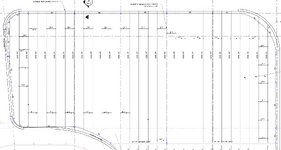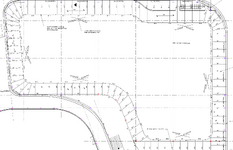palk7 EIT
Structural
- May 12, 2020
- 159
Hi,
There is an 80-foot span open web steel joist, and apart from the roof loading, it also picks up the floor walking track hung through the hangers. In this case how to go about the deflection limit, the Live load limit L/360 allows 2.67" and total L/240 allows 4". These look large value, considering it also carry floor as well, should the maximum total deflection limit be limited to 1.5" (L/640)? on the drawing? How to go about this?
Thank you
There is an 80-foot span open web steel joist, and apart from the roof loading, it also picks up the floor walking track hung through the hangers. In this case how to go about the deflection limit, the Live load limit L/360 allows 2.67" and total L/240 allows 4". These look large value, considering it also carry floor as well, should the maximum total deflection limit be limited to 1.5" (L/640)? on the drawing? How to go about this?
Thank you


